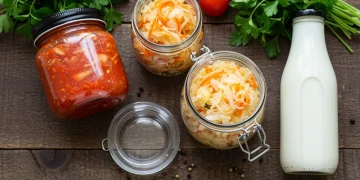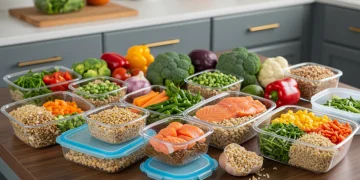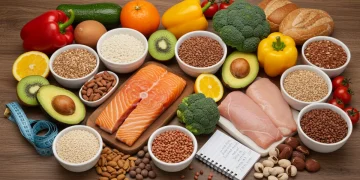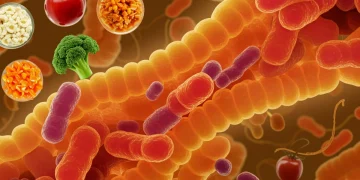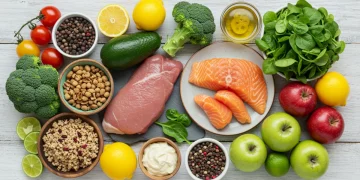Advanced Healthy Cooking: Boost Nutrient Absorption by 15% in 2025
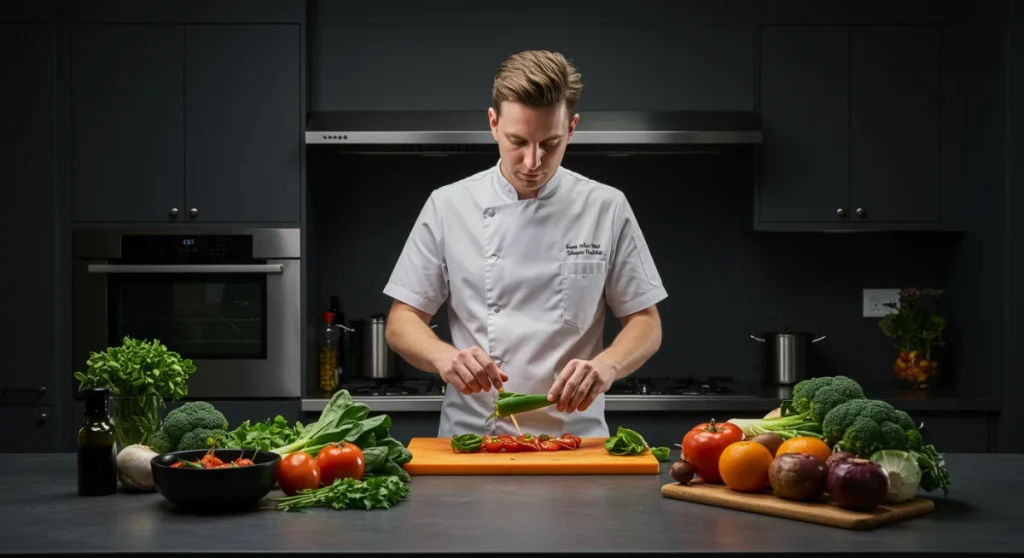
Advanced healthy cooking techniques for home chefs in 2025, such as sous vide and fermentation, are crucial for elevating nutrient absorption by 15% by preserving vitamins, enhancing bioavailability, and improving gut health.
In the evolving landscape of culinary arts and nutrition, the home kitchen is transforming into a sophisticated laboratory. Beyond the Basics: 4 Advanced Healthy Cooking Techniques for Home Chefs in 2025 to Elevate Nutrient Absorption by 15% offers a glimpse into the future of food preparation, moving beyond simple boiling or frying. This article explores innovative methods designed not only to enhance flavor but, more importantly, to maximize the nutritional value of every meal. Prepare to revolutionize your approach to healthy eating.
Mastering Sous Vide for Nutrient Preservation
Sous vide, a French term meaning ‘under vacuum,’ involves cooking food in a precisely temperature-controlled water bath. This method has long been a secret of professional kitchens, but with increasingly accessible equipment, it’s now a powerful tool for the home chef. The gentle, consistent heat ensures even cooking and, crucially, minimizes nutrient loss often associated with traditional high-heat methods.
When you cook vegetables or proteins at lower temperatures for longer durations, you prevent the degradation of heat-sensitive vitamins and minerals. For instance, water-soluble vitamins like B and C, which can leach out into cooking water, are largely retained because the food is sealed. This precise control over temperature and cooking environment makes sous vide an unparalleled technique for preserving the delicate integrity of nutrients.
Precision Temperature Control
The core advantage of sous vide lies in its ability to maintain an exact temperature. This eliminates the guesswork and overcooking that can diminish nutritional content and alter food textures. Achieving perfect doneness consistently means less waste and more delicious, nutrient-dense meals.
- Consistent Results: Food cooks evenly from edge to edge.
- Minimal Nutrient Loss: Vitamins and minerals stay locked in.
- Enhanced Texture: Proteins remain tender, and vegetables retain their crispness.
Beyond simple preservation, sous vide can also enhance the bioavailability of certain compounds. For example, cooking carrots sous vide at a specific temperature can make their beta-carotene more accessible for absorption. This technique allows for a level of culinary control that directly translates to better health outcomes, making it a cornerstone for any home chef serious about nutrition in 2025.

The Power of Fermentation for Gut Health and Bioavailability
Fermentation is an ancient practice making a powerful comeback, not just for its unique flavors but for its profound health benefits. This process involves microorganisms converting carbohydrates into alcohol or acids, transforming food and creating a wealth of beneficial compounds. From kimchi to kombucha, fermented foods are teeming with probiotics, enzymes, and enhanced nutrients.
For home chefs, mastering fermentation opens up a new realm of culinary possibilities and nutritional advantages. The microorganisms involved in fermentation predigest food, making nutrients more available for absorption in the human gut. This improved bioavailability means your body can extract more goodness from what you eat. Furthermore, fermented foods introduce beneficial bacteria to your digestive system, fostering a healthy gut microbiome that is intrinsically linked to overall health and immunity.
Boosting Probiotic Intake
A healthy gut microbiome is fundamental for efficient digestion and nutrient absorption. Fermented foods are a natural source of diverse probiotics, which colonize the gut and support its delicate balance. Regular consumption of these foods can lead to improved digestive health, reduced inflammation, and even better mood regulation.
- Enhanced Digestion: Probiotics aid in breaking down food.
- Increased Vitamin Synthesis: Gut bacteria can produce certain vitamins.
- Improved Immune Function: A healthy gut supports a robust immune system.
The fermentation process also creates new vitamins and enzymes, further enriching the nutritional profile of foods. For instance, the vitamin C content in cabbage can increase significantly when it’s fermented into sauerkraut. This technique is not just about extending shelf life; it’s about actively transforming ingredients into superfoods that contribute significantly to your daily nutrient intake and overall well-being.
Sprouting: Unlocking Dormant Nutrients in Grains and Legumes
Sprouting is a simple yet incredibly effective technique that dramatically enhances the nutritional value of grains, legumes, nuts, and seeds. It involves soaking and rinsing these dormant foods, allowing them to germinate. This process kick-starts enzymatic activity, breaking down complex starches and antinutrients, and unlocking a treasure trove of vitamins, minerals, and proteins.
Many plant-based foods contain antinutrients like phytic acid and enzyme inhibitors, which can bind to minerals and prevent their absorption. Sprouting effectively neutralizes these compounds, making vital minerals like iron, zinc, and calcium more bioavailable. For the home chef, sprouting is a low-cost, high-impact method to significantly boost the nutrient density of everyday staples, turning ordinary ingredients into nutritional powerhouses.
Reducing Antinutrients and Boosting Bioavailability
The transformation that occurs during sprouting is remarkable. As the seed germinates, it mobilizes its stored energy and nutrients to fuel growth. This biochemical process not only reduces antinutrients but also increases the content of essential amino acids, B vitamins, and antioxidants. The digestibility of these foods also improves, leading to less digestive discomfort and more efficient nutrient uptake.
- Eliminates Phytic Acid: Improves mineral absorption.
- Increases Enzyme Activity: Aids digestion.
- Boosts Vitamin Content: Higher levels of B vitamins and vitamin C.
Incorporating sprouted ingredients into your cooking is straightforward. Sprouted lentils can be added to salads or soups, sprouted grains can be used for baking, and sprouted seeds make excellent toppings. This technique is a testament to how simple, natural processes can yield profound nutritional benefits, making it an indispensable tool for the health-conscious home chef aiming for optimal nutrient absorption.
Pressure Cooking for Enhanced Nutrient Retention and Digestion
Pressure cooking, once primarily used for speed, is being rediscovered for its significant role in nutrient retention and digestibility. By cooking foods in a sealed pot under high pressure, temperatures are elevated, and cooking times are dramatically reduced. This method minimizes exposure to oxygen and limits the escape of water-soluble vitamins, making it a highly efficient technique for preserving nutritional integrity.
The intense heat and pressure also play a crucial role in breaking down tough fibers and proteins, making foods more digestible. For example, legumes and tough cuts of meat become tender and easier for the body to process, which in turn can lead to better nutrient absorption. For home chefs looking to maximize the health benefits of their meals while saving time, pressure cooking offers a compelling solution.
Optimizing Cooking Times and Nutrient Integrity
Unlike boiling, where nutrients can leach into large volumes of water that are often discarded, pressure cooking uses minimal liquid, ensuring that any escaped nutrients remain within the cooking vessel. This retention, combined with reduced cooking times, means less opportunity for heat-sensitive vitamins to degrade. The result is food that is not only tender and flavorful but also packed with more of its original nutritional content.
- Faster Cooking: Reduces degradation time for heat-sensitive nutrients.
- Retains Water-Soluble Vitamins: Nutrients stay in the food.
- Improved Digestibility: Breaks down complex carbohydrates and proteins.
Pressure cooking is particularly beneficial for preparing nutrient-dense foods like bone broth, which extracts valuable collagen and minerals, and for cooking whole grains and beans, making their nutrients more accessible. This technique is a powerful ally in the kitchen for anyone committed to advanced healthy cooking techniques that deliver both efficiency and superior nutritional outcomes. It represents a smart way to ensure that your meals are as healthy as they are delicious.
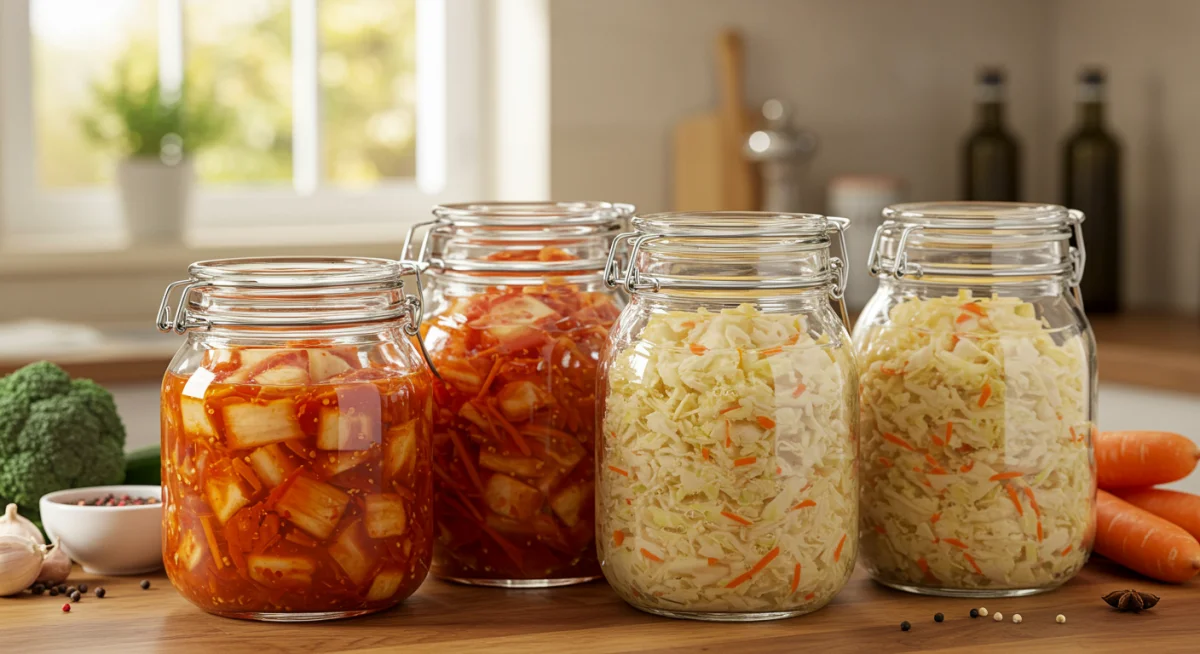
The Art of Ingredient Pairing for Synergistic Absorption
Beyond individual cooking techniques, the strategic pairing of ingredients plays a pivotal role in maximizing nutrient absorption. This concept, known as food synergy, recognizes that certain nutrients are better absorbed or utilized when consumed together. Understanding these interactions allows home chefs to create meals that are not just balanced but actively enhance the body’s ability to absorb vital compounds.
For instance, pairing iron-rich foods with vitamin C significantly boosts non-heme iron absorption. Similarly, fats are essential for the absorption of fat-soluble vitamins (A, D, E, K). By consciously combining ingredients, home chefs can elevate the nutritional impact of their dishes far beyond what individual components might offer. This approach transforms cooking into a mindful practice of nutritional optimization.
Key Synergistic Pairings
The science of food synergy provides actionable insights for daily meal preparation. It encourages a holistic view of cooking, where every ingredient is chosen not just for flavor or texture but for its interaction with other components in the dish. This thoughtful approach can dramatically increase the efficiency with which your body extracts and utilizes nutrients.
- Iron + Vitamin C: Spinach with a squeeze of lemon.
- Turmeric + Black Pepper: Curcumin’s absorption enhanced by piperine.
- Fat-Soluble Vitamins + Healthy Fats: Carrots with avocado oil.
Another excellent example is the combination of lycopene-rich tomatoes with olive oil. Lycopene, an antioxidant, is fat-soluble, and its absorption is significantly improved when consumed with healthy fats. This principle extends to countless other pairings, from combining calcium with vitamin D for bone health to pairing plant-based proteins to achieve a complete amino acid profile. Mastering the art of ingredient pairing is a sophisticated yet accessible way for home chefs to ensure their meals are truly greater than the sum of their parts, leading to superior nutrient absorption and overall health.
Adopting Advanced Cooking Technologies for the Future Kitchen
As we advance into 2025, the home kitchen is becoming increasingly integrated with smart technologies that support advanced healthy cooking techniques. From AI-powered ovens to smart sensors that monitor nutrient levels, these innovations are making sophisticated culinary practices more accessible and efficient for the everyday home chef. Embracing these technologies can streamline complex processes and provide valuable insights into food preparation, ultimately leading to better nutritional outcomes.
These advanced tools aren’t just about convenience; they’re about precision and optimization. Smart appliances can recommend ideal cooking temperatures and times to preserve nutrients, track ingredient freshness, and even suggest synergistic pairings based on dietary goals. For the home chef committed to elevating nutrient absorption, leveraging these technological advancements is not just a trend but a strategic move towards a healthier future.
Smart Kitchen Appliances and Their Benefits
The integration of smart technology into cooking equipment is revolutionizing how we approach healthy eating. These devices simplify advanced techniques like sous vide and fermentation by automating temperature control, timing, and even recipe execution. They remove much of the guesswork, allowing home chefs to consistently achieve professional-level results with minimal effort.
- Automated Precision: Ensures optimal cooking conditions for nutrient retention.
- Personalized Guidance: Offers recipes and tips tailored to health goals.
- Reduced Food Waste: Tracks freshness and suggests usage to prevent spoilage.
Consider smart induction cooktops that maintain exact temperatures for delicate sauces or smart refrigerators that scan ingredients and suggest healthy meal plans. These technologies empower home chefs to experiment with advanced techniques confidently, knowing that their efforts are supported by intelligent systems designed to enhance both flavor and nutrition. Adopting these tools is a proactive step towards a more informed, efficient, and nutrient-rich cooking experience in the years to come.
| Technique | Nutrient Absorption Benefit |
|---|---|
| Sous Vide | Preserves heat-sensitive vitamins and minerals through precise temperature control. |
| Fermentation | Enhances bioavailability of nutrients and introduces beneficial probiotics for gut health. |
| Sprouting | Reduces antinutrients and boosts vitamin/mineral content in grains and legumes. |
| Pressure Cooking | Retains more nutrients due to reduced cooking time and less oxygen exposure. |
Frequently Asked Questions About Advanced Healthy Cooking
The primary benefit of sous vide is its precise, low-temperature cooking, which significantly minimizes the loss of heat-sensitive and water-soluble vitamins. This method ensures that delicate nutrients are preserved within the food, leading to higher overall retention compared to conventional cooking techniques.
Fermentation enhances nutrient bioavailability by introducing beneficial microorganisms that pre-digest food components. This process breaks down complex compounds and antinutrients, making vitamins, minerals, and probiotics more readily available for absorption in the human digestive system, improving gut health.
Sprouting is an advanced technique because it activates enzymes that break down antinutrients like phytic acid, which typically inhibit mineral absorption. This process dramatically increases the availability of essential minerals, boosts vitamin content, and improves the overall digestibility of grains and legumes.
Yes, pressure cooking can significantly improve nutrient retention. By cooking foods quickly in a sealed environment, it limits exposure to oxygen and reduces the time heat-sensitive nutrients are subjected to high temperatures. This minimizes nutrient degradation and prevents water-soluble vitamins from leaching out.
Ingredient pairing is crucial in advanced healthy cooking as it leverages food synergy. Combining specific nutrients, like iron with vitamin C or fat-soluble vitamins with healthy fats, can dramatically enhance their absorption and utilization by the body, maximizing the overall nutritional impact of a meal.
Conclusion
Embracing these advanced healthy cooking techniques in 2025 offers home chefs an unparalleled opportunity to transform their kitchens into hubs of nutritional excellence. From the precision of sous vide and the probiotic power of fermentation to the nutrient unlocking capabilities of sprouting and the efficiency of pressure cooking, each method contributes significantly to elevating nutrient absorption. By integrating these practices, alongside smart ingredient pairing and leveraging emerging kitchen technologies, we can move beyond basic food preparation to create meals that are not only delicious but also optimally nourishing, ensuring our bodies receive the maximum benefit from every bite. This holistic approach to cooking is key to a healthier, more vibrant future.
